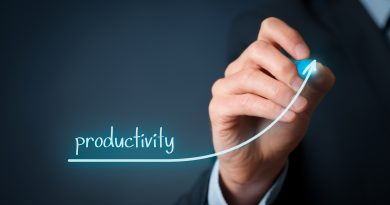Deal with Distractions and Information Overload
Have you heard about Gloria Mark’s rather clever concept of ‘working spheres’?
Mark – who is the Associate Professor at The Donald Bren School of Information & Computer Sciences at the University of California – thought that things like ‘task’ and ‘project’ were far too restrictive in a world where people are often concentrating on a whole multitude of different things simultaneously.
Spheres better reflect the non-linear way we tend to bounce between items on our to-do lists these days. Mark’s studies revealed that on average, people are dealing with 12 different working spheres every day and switching between them every 10 and a half minutes.
She suggests that this regular jumping between tasks is partly as a result of internal interruption. Not only are we being disturbed by a million one external forces when trying to concentrate, we’re also interrupting ourselves all the time.
In fact, Mark found that 44% of interruptions experienced by her respondents were internal. Bolstered by her discovery that people are now switching between technological devices every 2 minutes and 11 seconds.
Another person pointing the finger at modern technology is Computer Science Professor, Cal Newport. He blames technology for an inability to engage in deep focus and catalysing something called ‘attention residue’ where minds are constantly lingering on previous tasks and never fully fixed on the task (or working sphere) in hand.
The problem(s) with it all
Mark’s research highlighted how people are now spending little over 3 minutes on a task before being interrupted. Paired with Gallup’s findings that it takes an average of 23 minutes and 15 seconds to regain focus after being disturbed, this raises a number of red flags…
Low productivity – With such regular interruption (both internal and external) and lack of focus, it becomes virtually impossible to get anything done to a high standard or tight deadline.
Low motivation – Inability to concentrate and low output can lead to feelings of frustration, stress and therefore an unwillingness to apply yourself.
Poor employee wellbeing – Pressure, frustration and low motivation are all highly detrimental to mental health and wellness. Trying to stay on top of things in this type of situation can also push people closer towards cognitive overload or burnout.
Low rates of attraction and retention – To attract and retain the best talent, you need to provide a working environment where people can feel positive, engaged, highly motivated and encouraged to fulfil their potential.
It’s time to take action…
What can be done about it?
There’s only so much you can do about other people’s internal interruptions but as a business owner, what you can do is provide a workplace which optimises concentration and deep focus.
Our tips:
- Use time management tools to prioritise processes, apply deadlines and help people stay on track.
- Permit flexible working so that people can work remotely or from home when they just can’t seem to knuckle down at the office.
- Invest in some good quality office acoustic solutions to keep excess noise at bay.
- Provide tech-free workspaces where people can go to avoid the constants dings, pings and buzzes that distract us all every two minutes.
- Outsource some of the business’ responsibilities so that you and your staff don’t end up struggling under the weight of an unmanageable workload.




